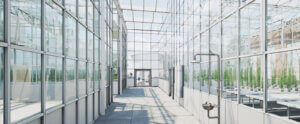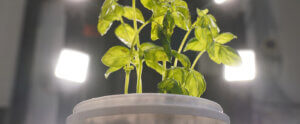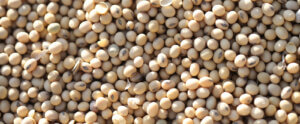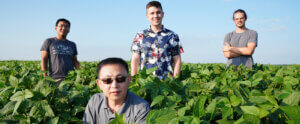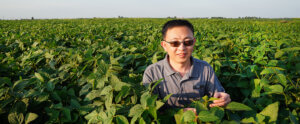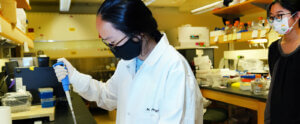Site Archive
Purdue trustees approve $20 million greenhouse expansion
Today, the Purdue University Board of Trustees approved a $20 million allocation toward a phenotyping greenhouse facility. A component of Plant Sciences 2.0, one of the five strategic initiatives of Purdue’s Next Moves, the facility will expand opportunities for non-invasive sensor-based phenotyping and add nearly 5,000 square feet of greenhouse research space.
READ MOREContaminated leafy greens turn purple
Some might say you look a little green when you are sick. Leafy greens actually turn purple—although that’s not obvious to the human eye, it can be seen through advanced hyperspectral imaging. Purdue researchers discovered this color change (different than purple varieties of some vegetables) in kale and basil stressed by cadmium, a heavy metal toxic to human and animal health.
READ MOREAlthough most of the world’s soybean crop is fed to animals, a Purdue plant breeder thinks that soybean’s complete protein — it contains all eight amino acids essential for human health — makes it the logical choice for the plant-based meat increasingly making its way onto consumers’ tables.
READ MOREImproving soybeans reduces the cost to farmers and the environment
Instead of relying solely on nitrogen in the soil, soybeans and many other legumes can pull nitrogen from the air for their growth – a natural process that is environmentally friendly and also increases soil nitrogen levels for the next crop in rotation.
Plant science research at Purdue University has found a potential way to double soybean plants’ use of the process, called biological nitrogen fixation.
Agronomy professor honored by Crop Science Society of America
The Crop Science Society of America (CSSA) has announced that Purdue professor Jianxin Ma is its 2021 Fellow Award Recipient. The annual award recognizes outstanding contributions to crop science through education, national and international service and research.
READ MORERecent Posts
- Report shows differences in food insecurity, sustainable food purchasing between racial and ethnic groups
- Integration leads to leap in tech for forest inventory, management
- Friday Photo: 05/13/2022
- Urban-rural food satisfaction, food security gaps show in new report
- Unsung Diversity Hero Awards honor those who’ve gone above and beyond

